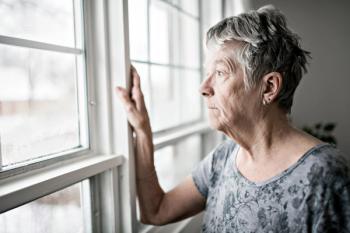
Hispanic Patients On Ventilators Are Five Times More Likely To Be Placed In Deep Sedation
A new study points to disparities for patients in respiratory failure, which can have dire consequences. The lead researchers talk about the implications.
Researchers examining patients with respiratory failure found that many patients on ventilators are being placed under deep sedation, but Hispanic patients are much more likely to be heavily sedated.
In fact, Hispanic patients on ventilators were five times more likely to be placed under deep sedation than white patients, according to the
Researchers examined patients with acute respiratory distress syndrome (ARDS), a serious lung condition that causes low blood oxygen, according to the
Thomas Valley, MD, a co-author of the study and associate professor of pulmonary and critical care medicine at the University of Michigan, said in an interview that the researchers began the study as they tried to understand why Hispanic patients with respiratory failure are more likely to die.
“We thought that sedation, deep sedation, might act as one of those mechanisms that could explain that difference,” Valley says.
While it’s unclear if deep sedation is playing a role in the increased mortality of Hispanic patients, Valley said it is clear from their work that Hispanic patients on ventilators are far more likely to be placed in deep sedation.
“This is absolutely a big deal,” Valley said.
However, most patients on ventilators are spending at least some time under deep sedation, regardless of their race or ethnicity, and the researchers said that’s an important finding as well.
The researchers analyzed 505 patients with moderate to severe ARDS at 48 hospitals around the country. The patients were on ventilators and light sedation was recommended, researchers said.
“Hispanic patients were more likely than non-Hispanic patients to get deeply sedated. But the other important takeaway is that we're still deeply sedating everybody,” Valley said. “We're just deeply sedating Hispanic patients even more so. So there's a lot of room for improvement for everybody, but particularly for Hispanic patients.”
More than 90% of patients examined were in deep sedation at some point during their first five days on ventilators, and patients spent almost 75% of those days heavily sedated, researchers found.
Mari Armstrong-Hough, co-principal investigator of the study and assistant professor of social & behavioral sciences and epidemiology at the NYU School of Global Public Health, said in an interview that most were under deep sedation on the first day.
“Almost all of them are given deep sedation for at least one day,” Armstrong-Hough said. But the disparities come with some patients deeply sedated for longer periods. “Some patients are being deeply sedated for longer and others are not,” she said.
Importantly, hospitals with at least one Hispanic patient enrolled were sedating all of their patients more often, said Armstrong-Hough.
In hospitals with Hispanic patients, all patients were placed in deep sedation for 86% of their days on ventilators. But in hospitals without Hispanic patients, all patients were deeply sedated for 66% of their ventilator days. Even after adjusting for “big hospital-level effects,” the researchers still found Hispanic patients were five times more likely to be deeply sedated, Armstrong-Hough says.
Patients that are placed under deep sedation can develop serious long-term problems, Valley notes. For years, healthcare providers viewed deep sedation as a step to keep patients comfortable while they’re on ventilators, and the impact to patients was viewed as neutral, Valley said. Over the past few decades, doctors and researchers have gained an understanding that deep sedation can lead to more serious complications.
“When we knock patients out, they're more likely to be delirious,” Valley says. “They're more likely to have problems with their memory. They're more likely to be weak after they leave the ICU, and they're more likely to die. So there are some major consequences when we deeply sedate our patients on a breathing machine.”
While the analysis doesn’t identify why Hispanic patients are more likely to be placed under deep sedation, language barriers could be a factor, Armstrong-Hough says.
“There could be language discordance that could lead to differences in assessment of agitation or delirium, or perceptions of agitation or delirium,” she says. “And so that could be explaining some of the differences that we see, but it's going to take further research and probably more detailed data than even we had access to in order to answer that question.”
Valley says he looks forward to additional analysis to examine why Hispanic patients are more likely to be placed under heavy sedation.
“An important next step for us is to try to understand what's going on at the bedside that's driving this,” Valley says.
Newsletter
Get the latest industry news, event updates, and more from Managed healthcare Executive.

















































